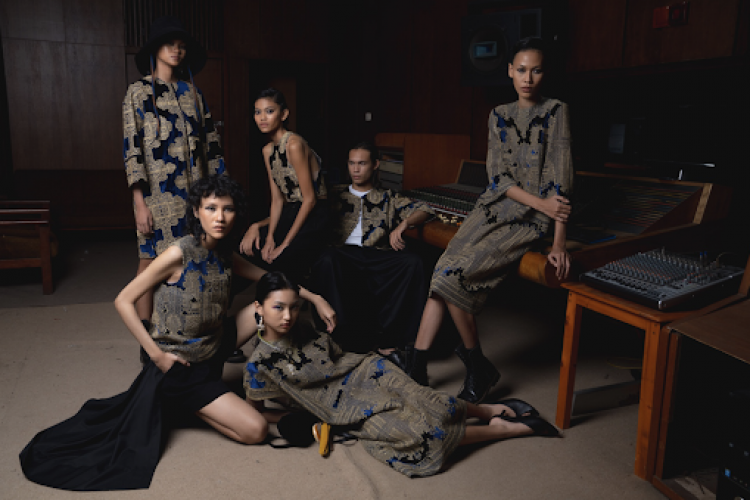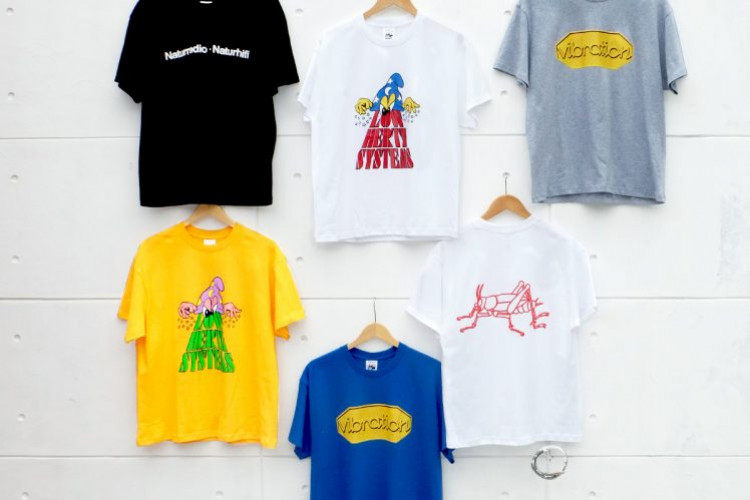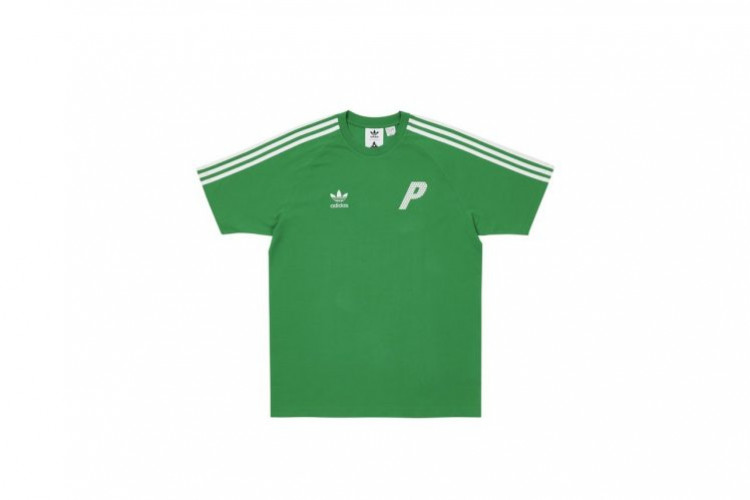
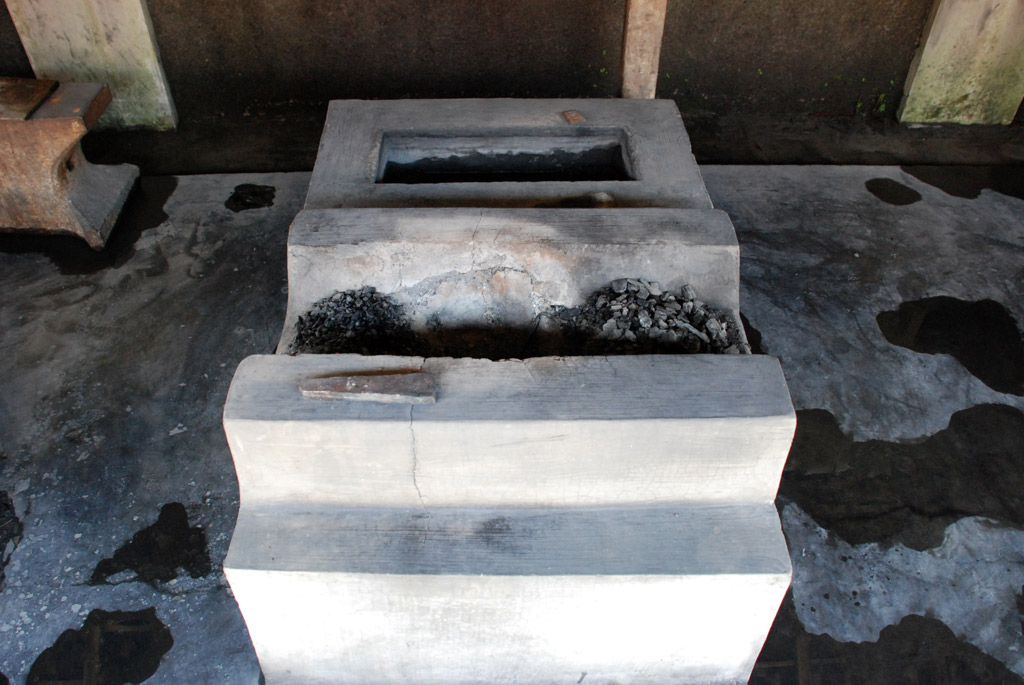
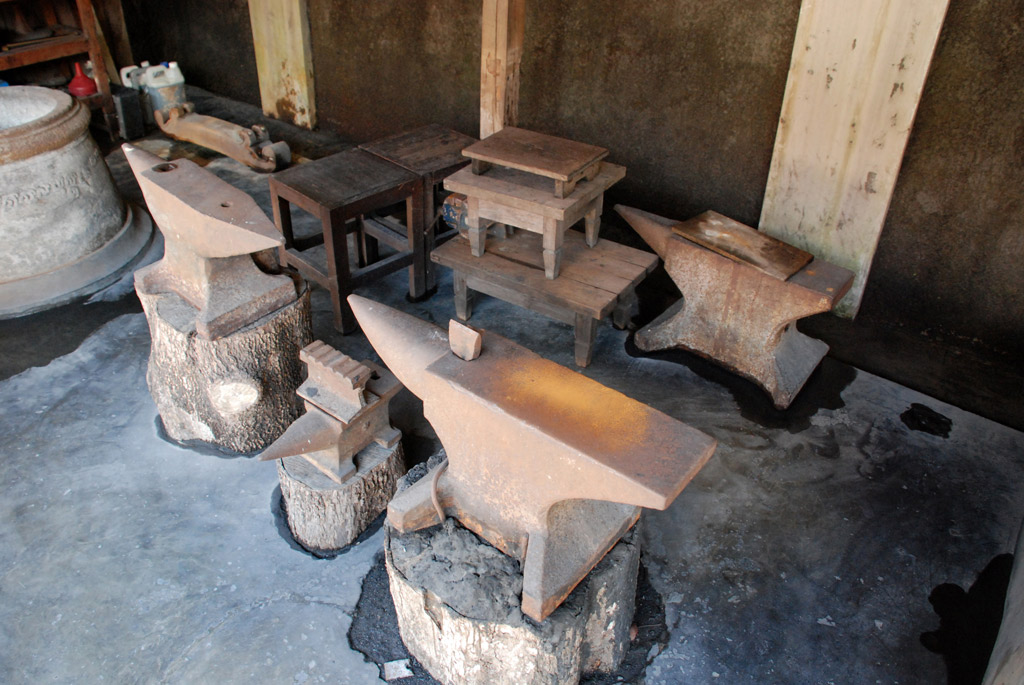
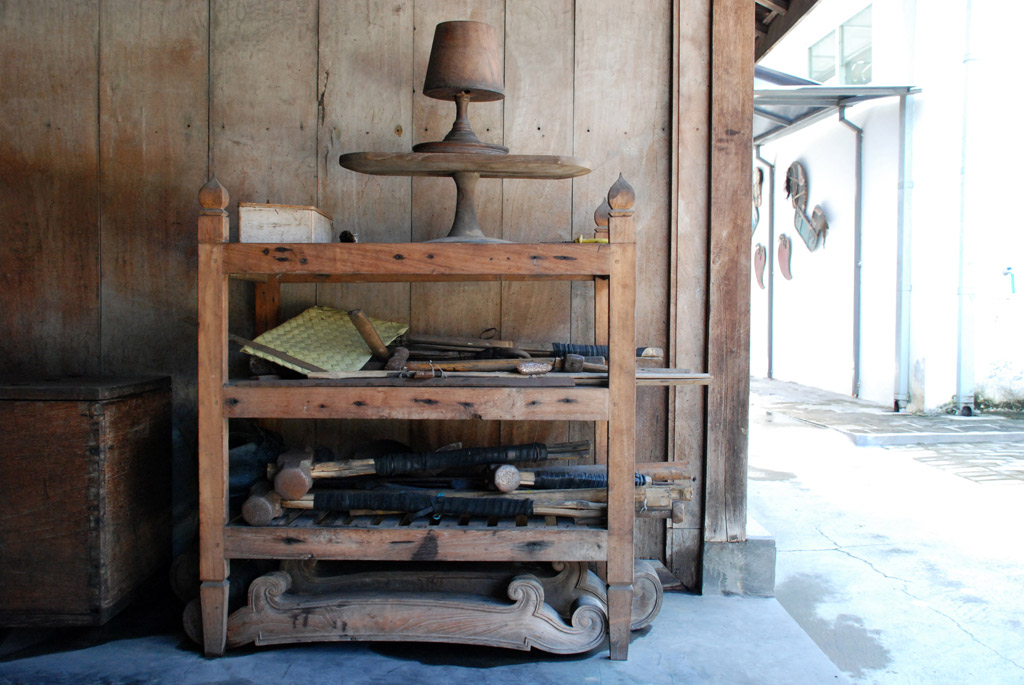
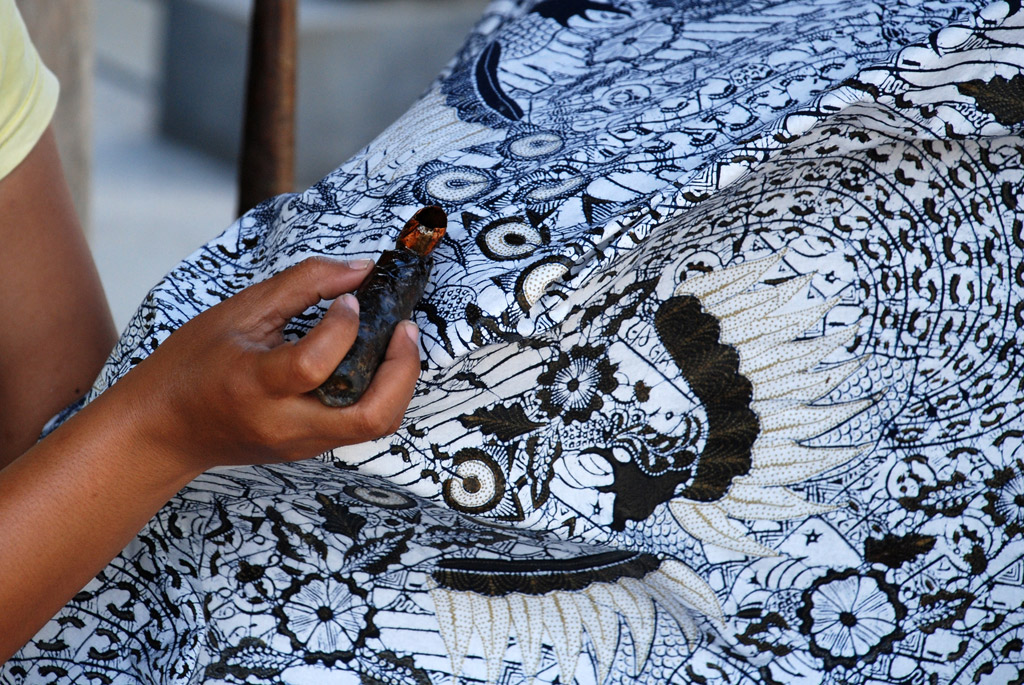
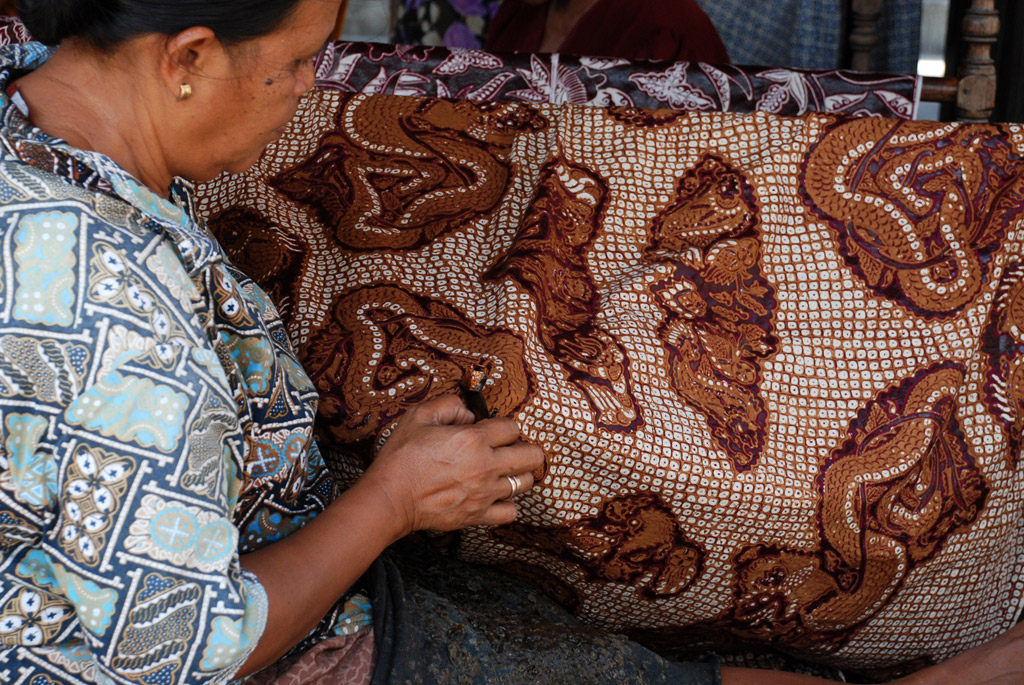
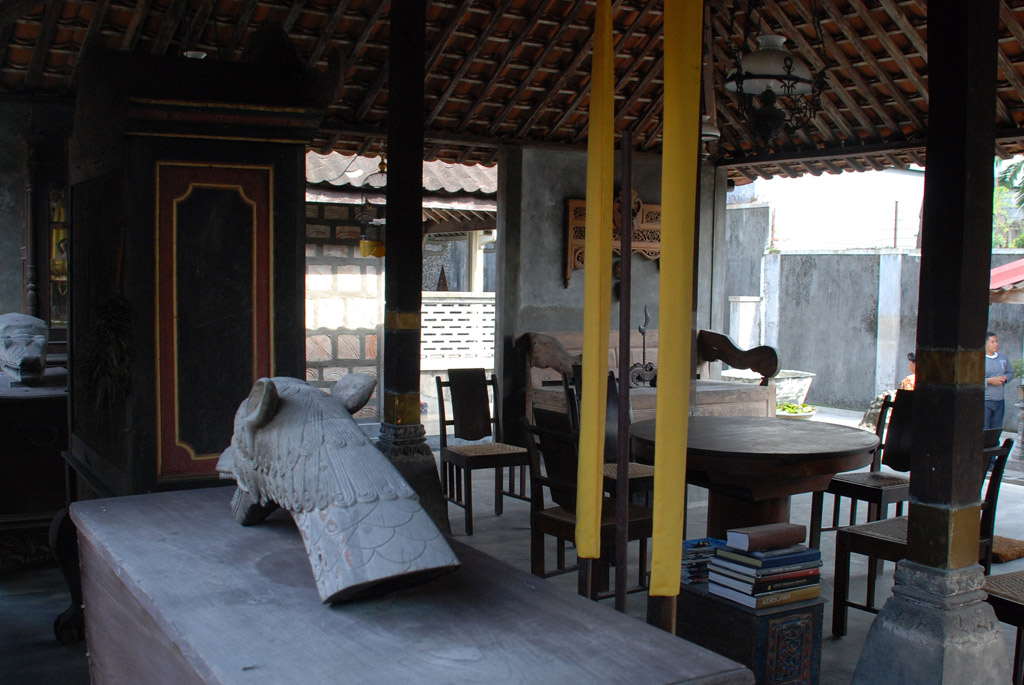

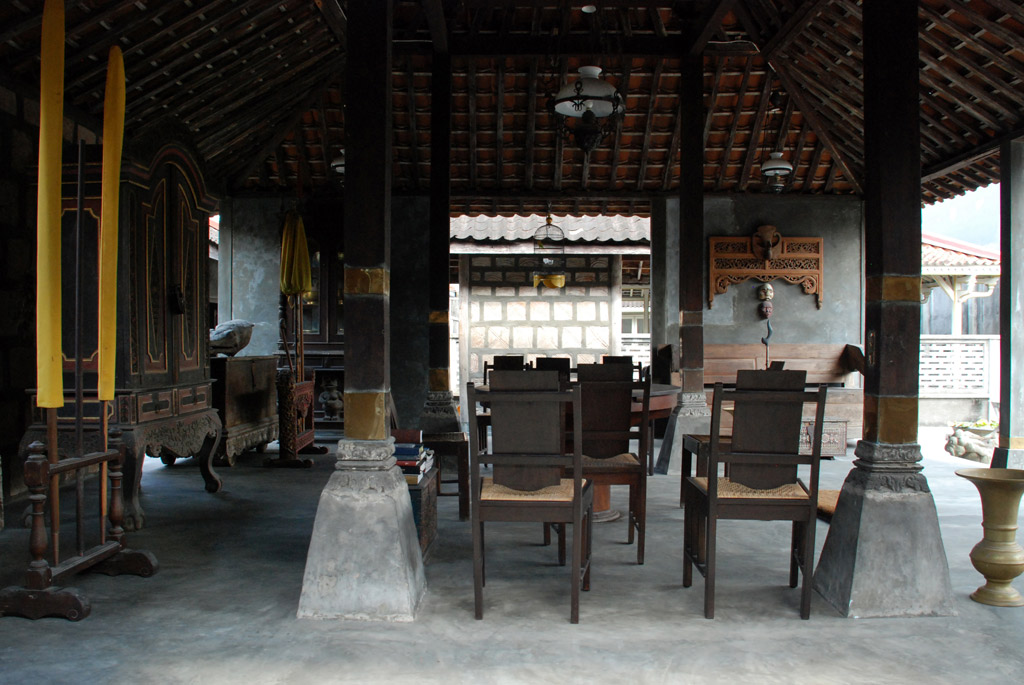
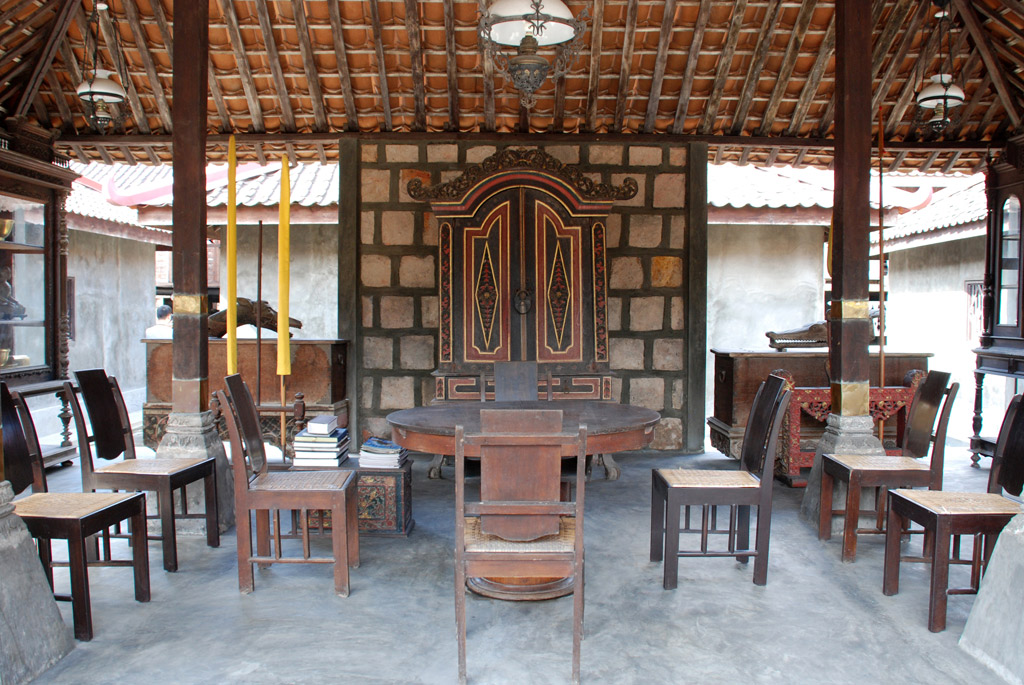
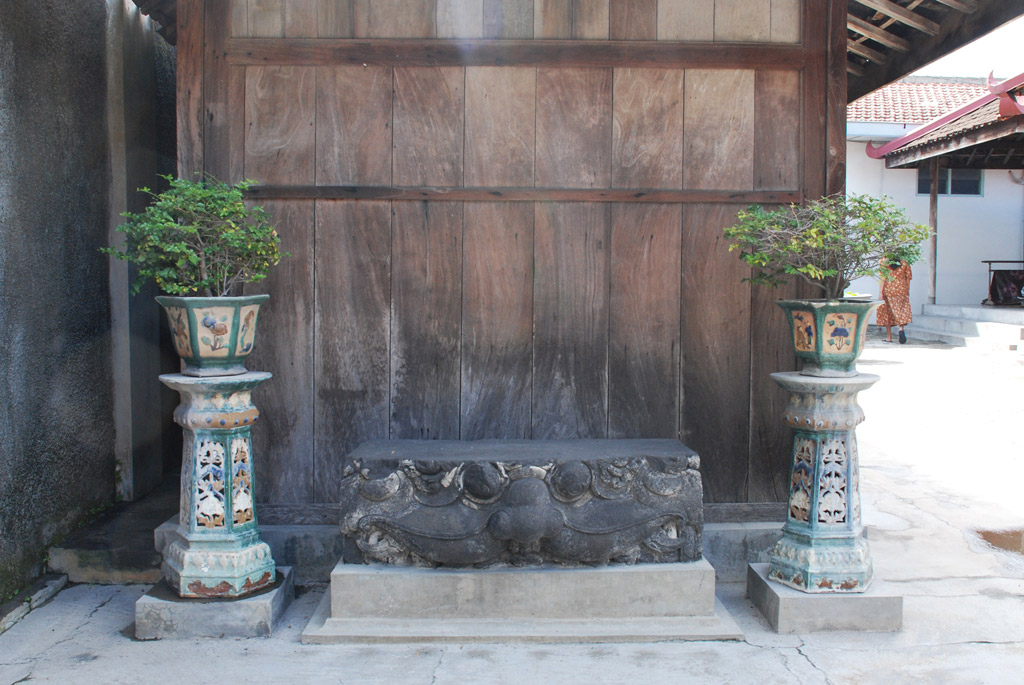
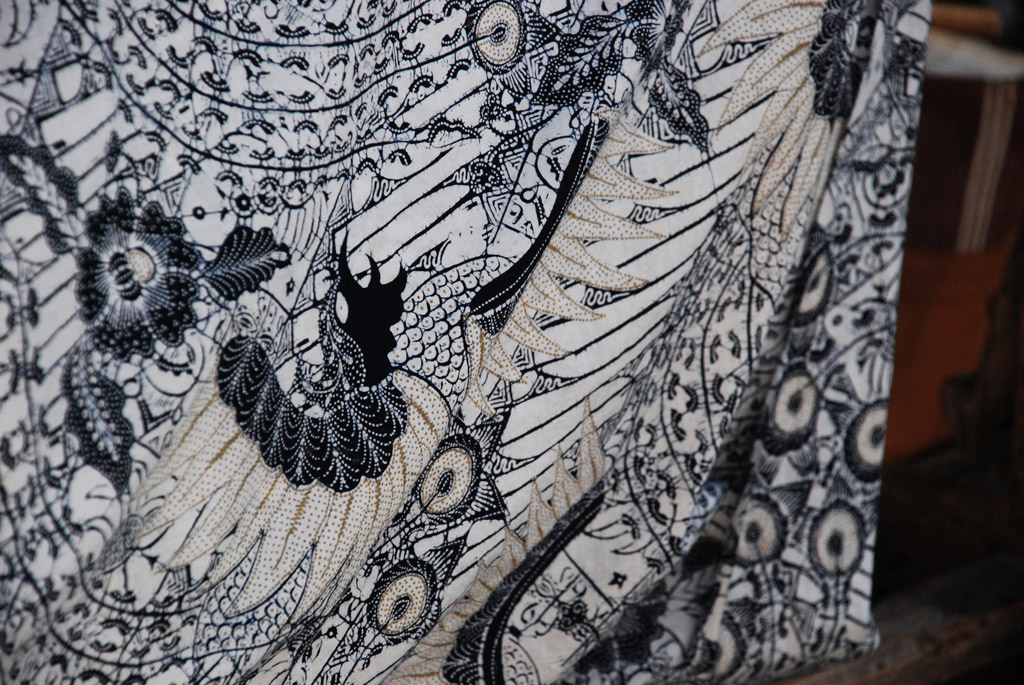
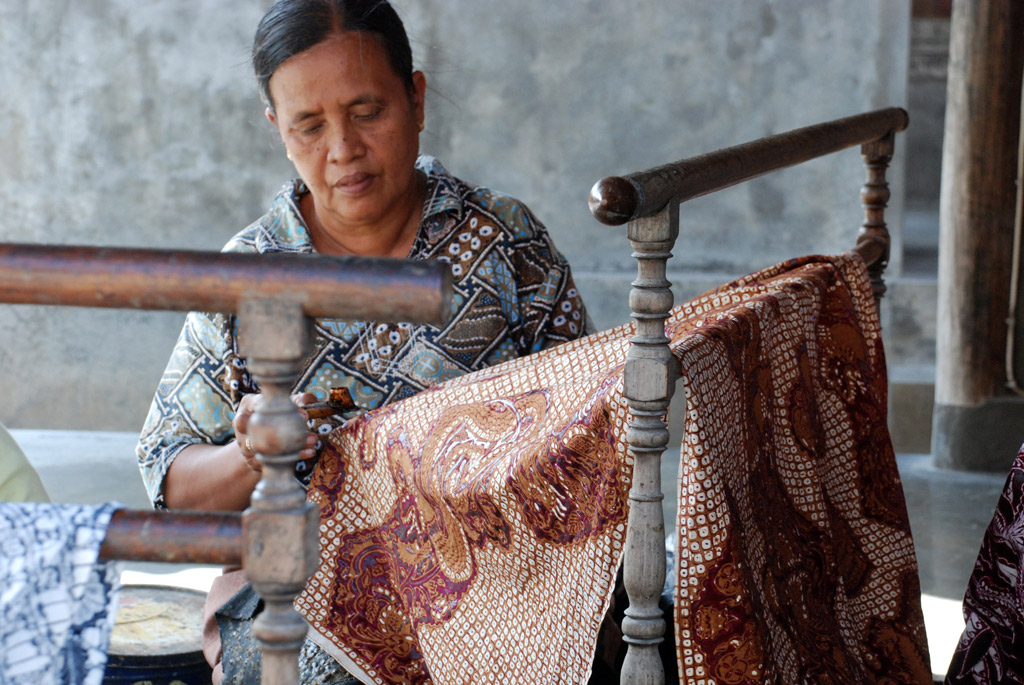
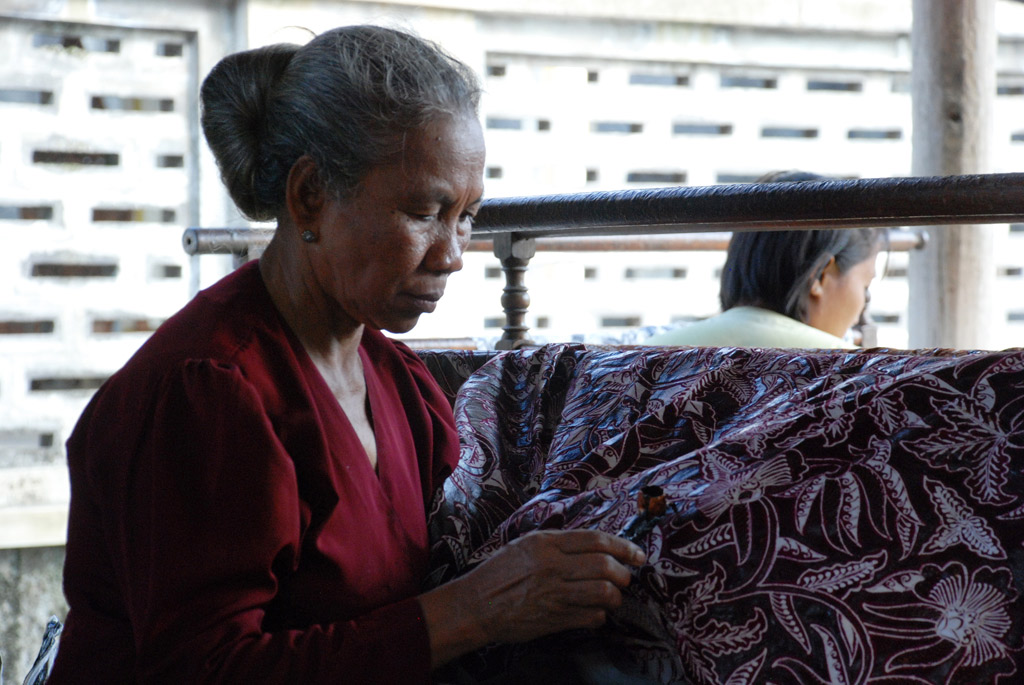
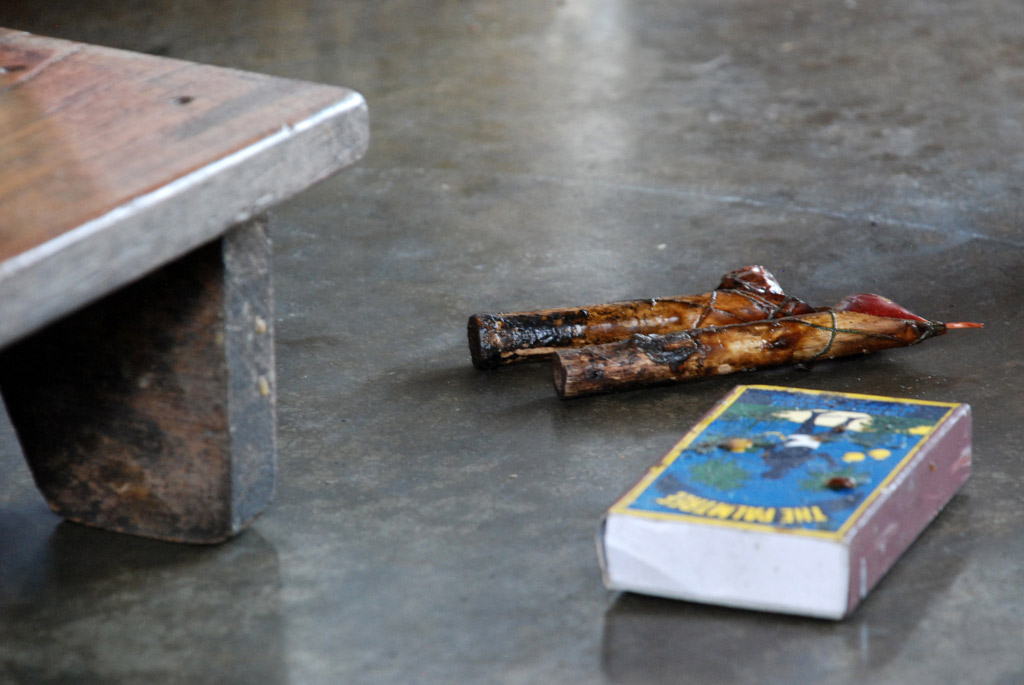
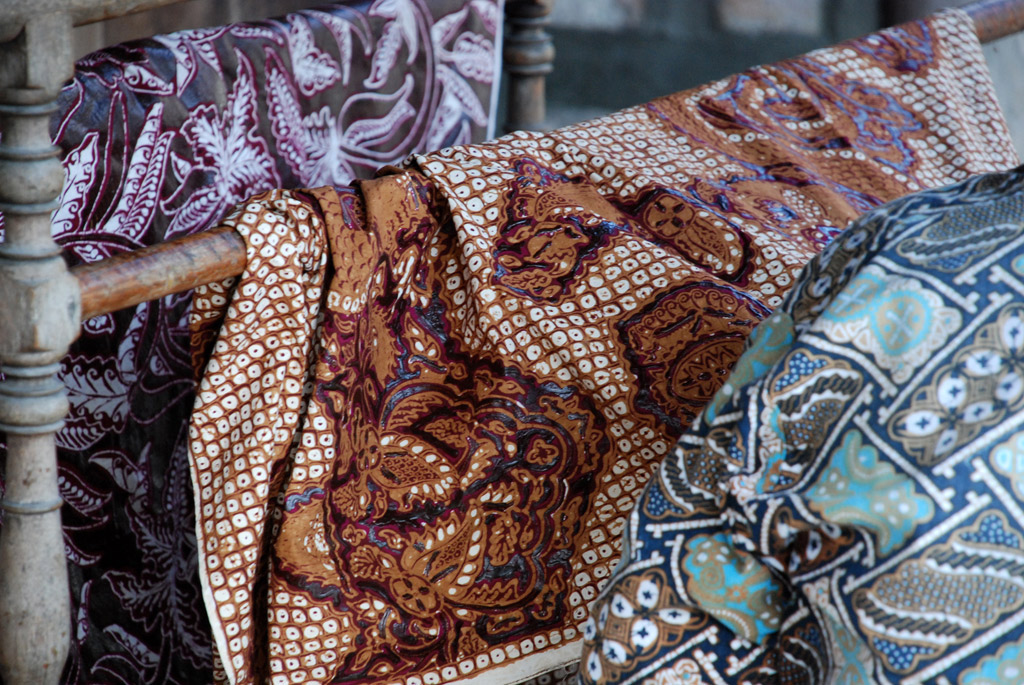
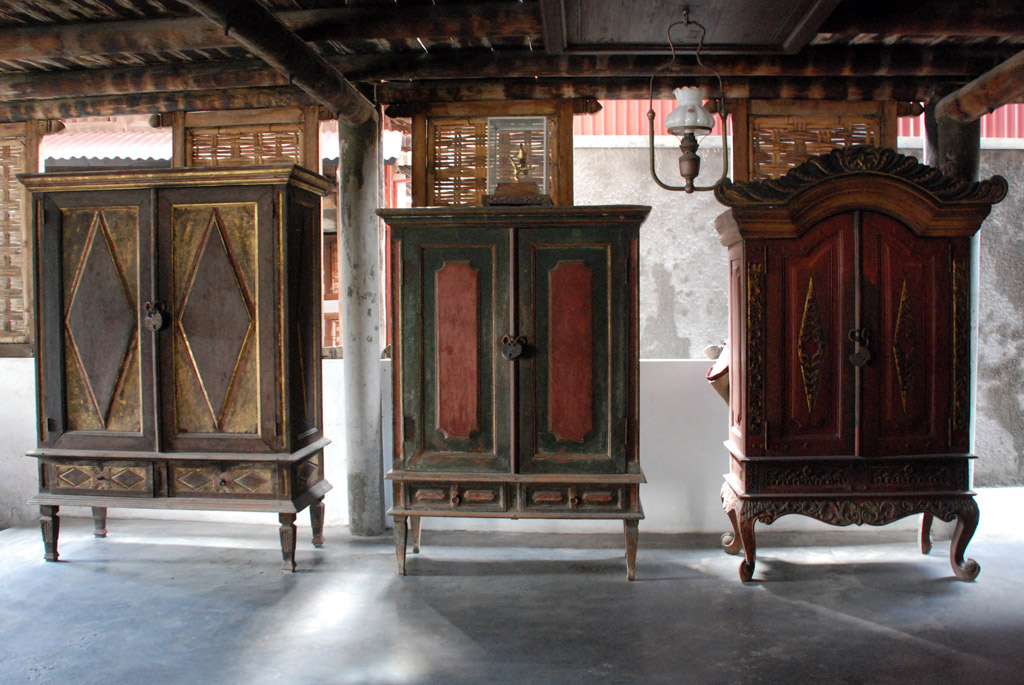
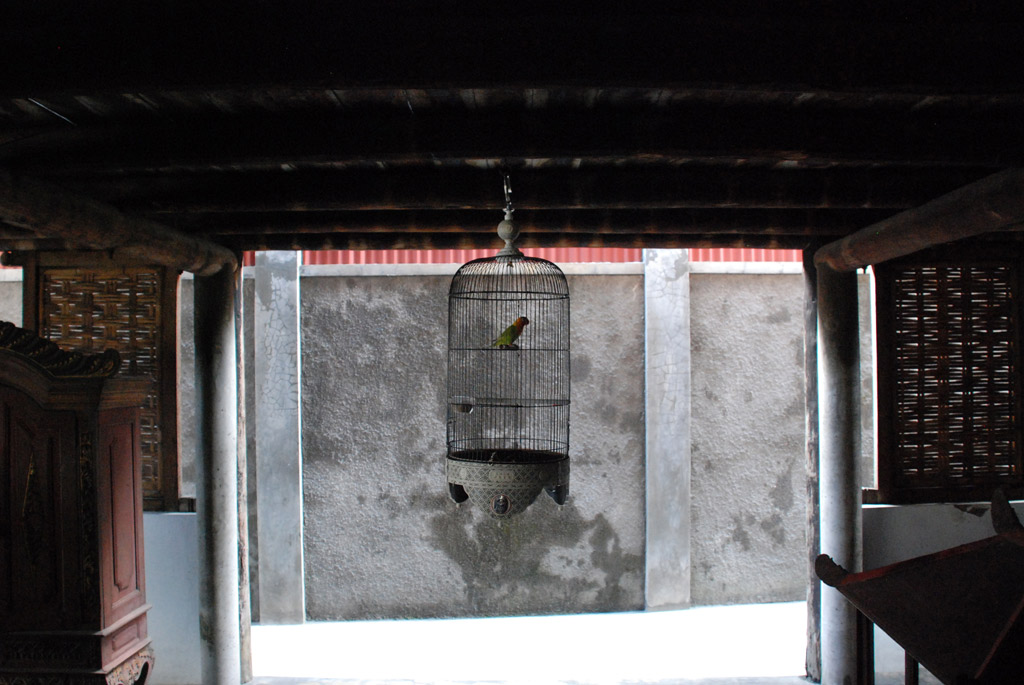
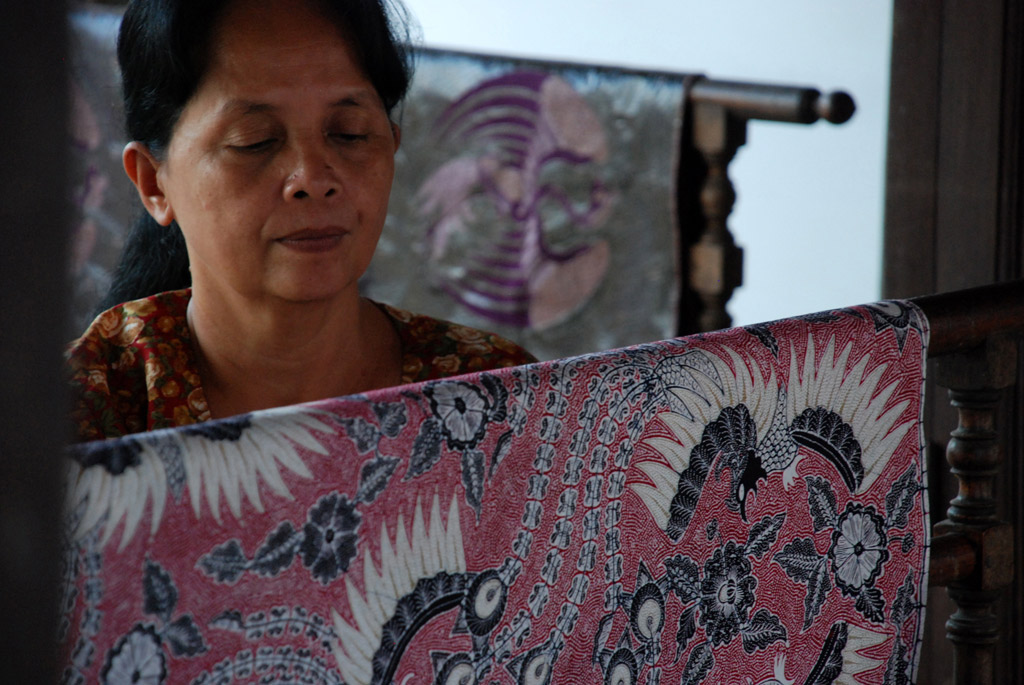
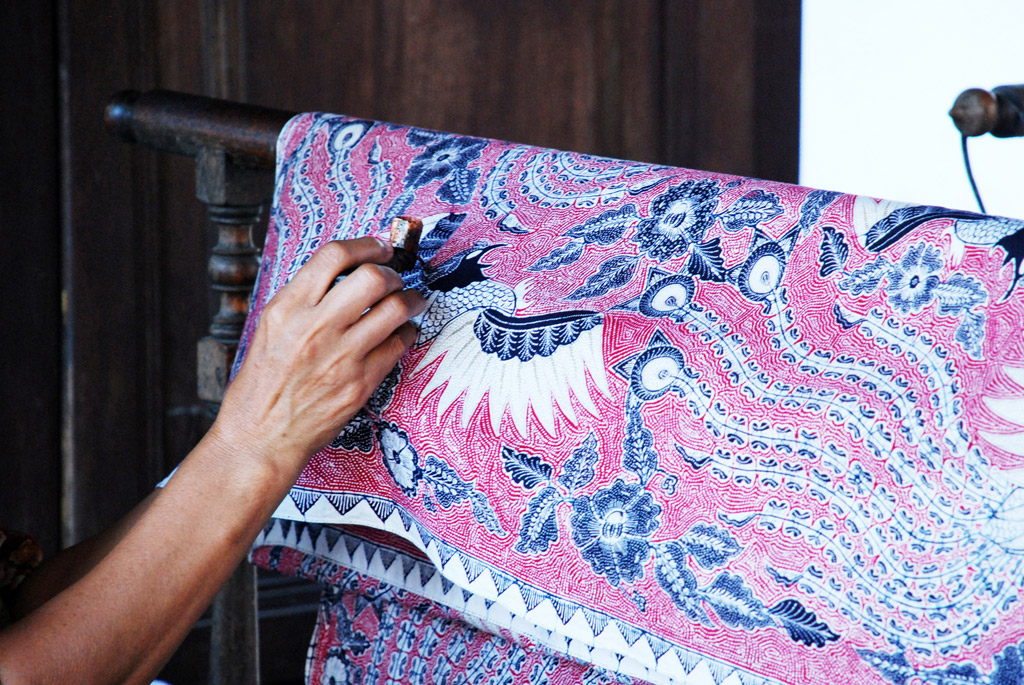
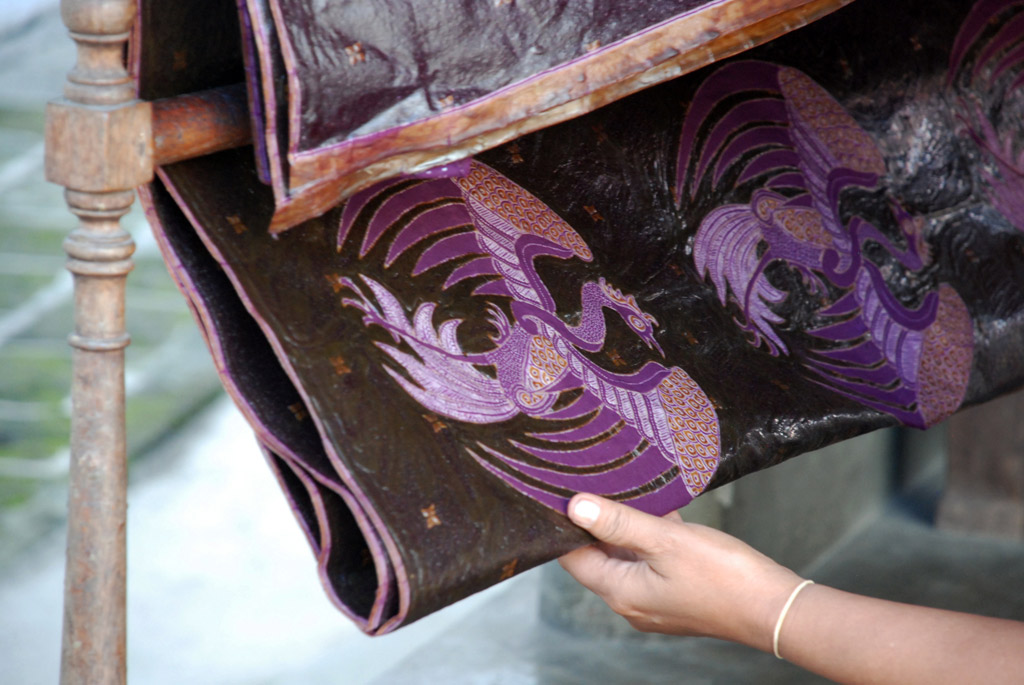
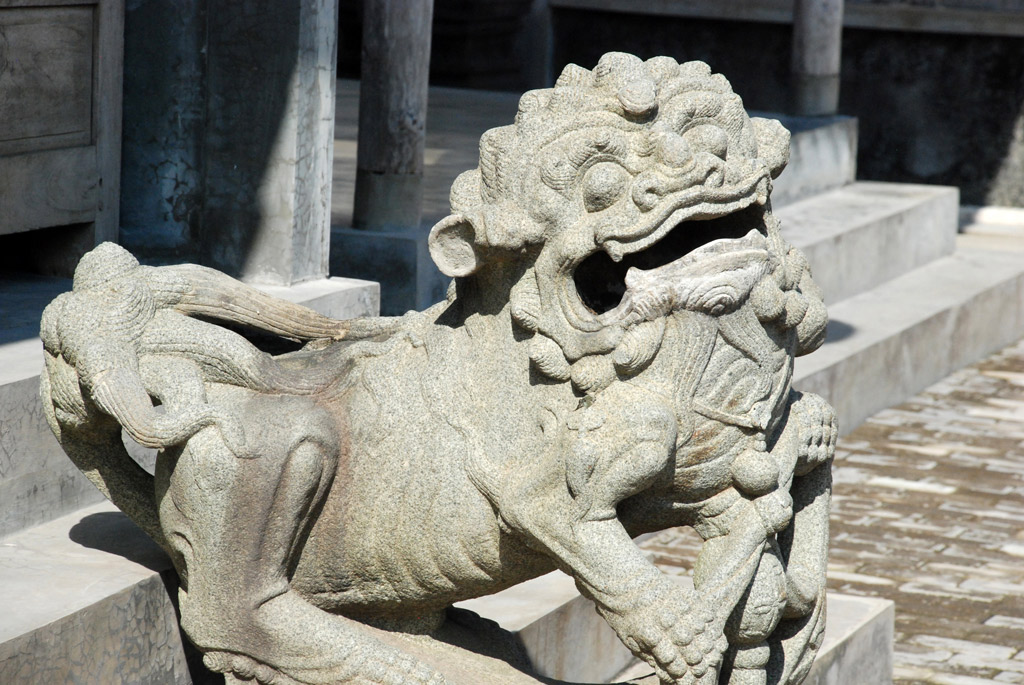
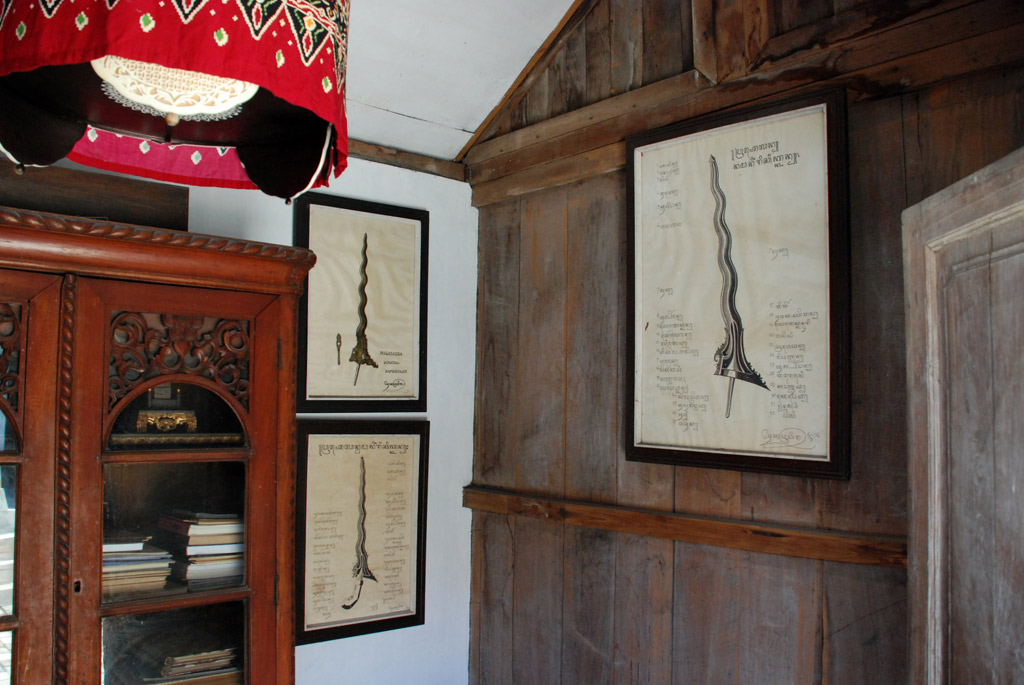
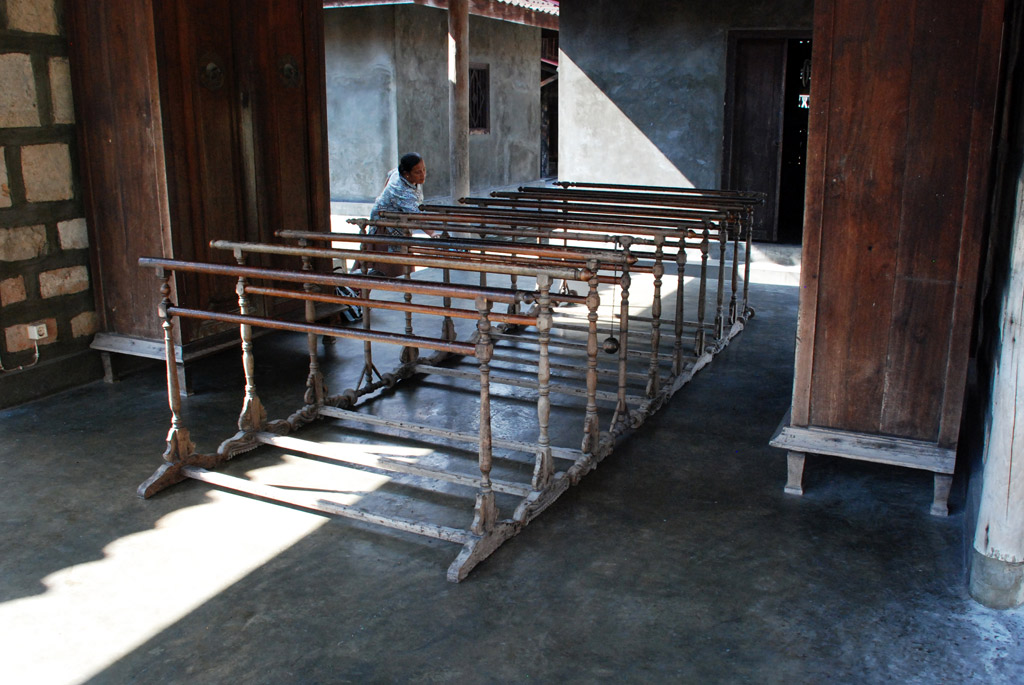
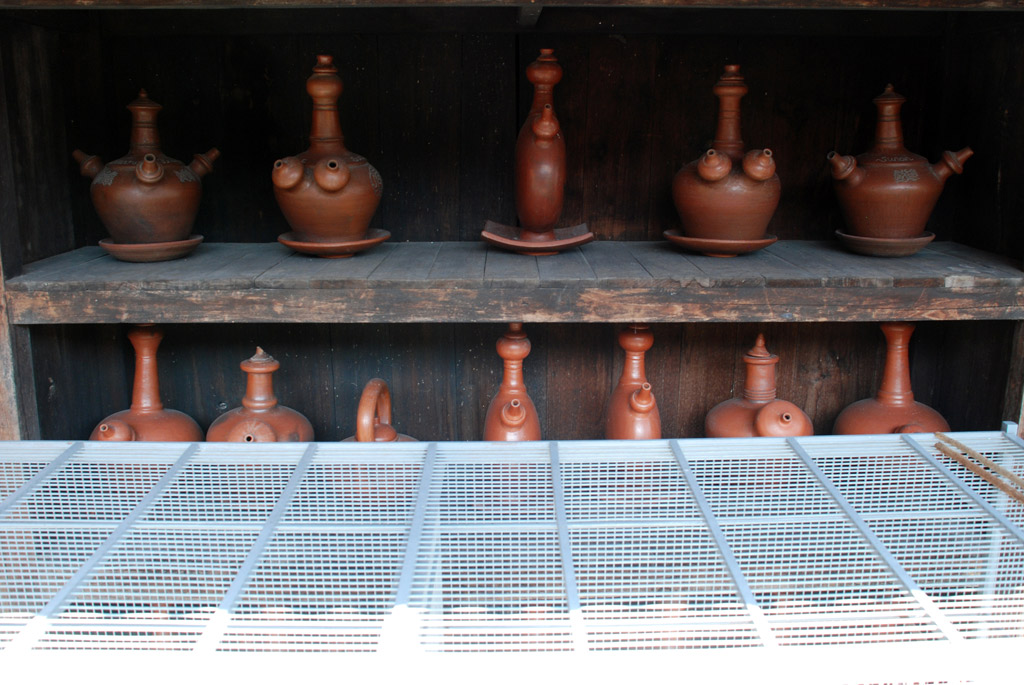
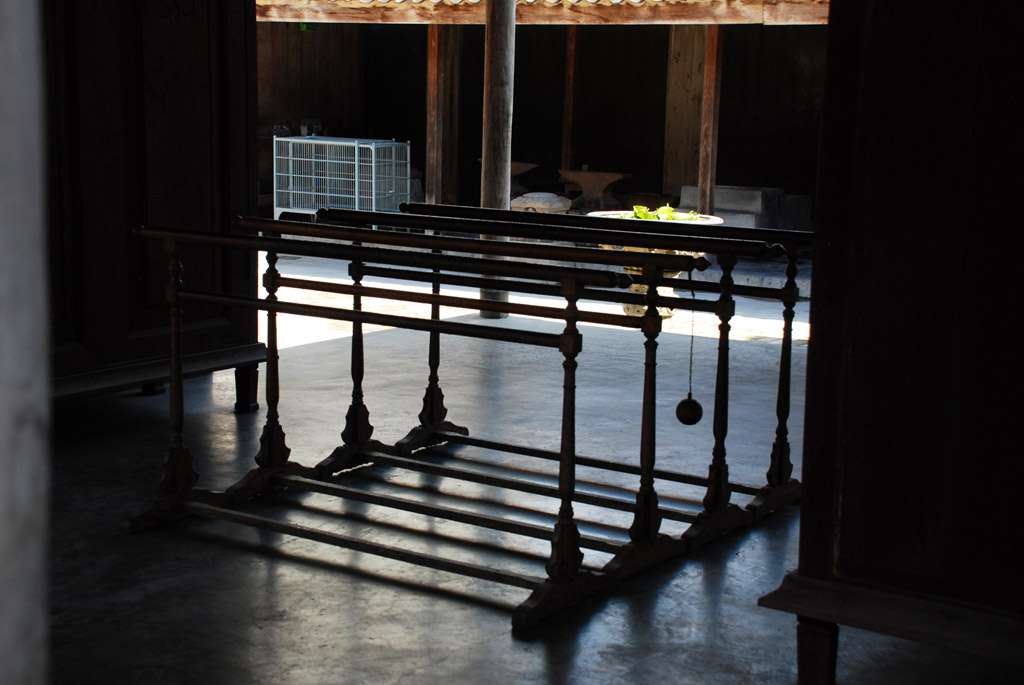
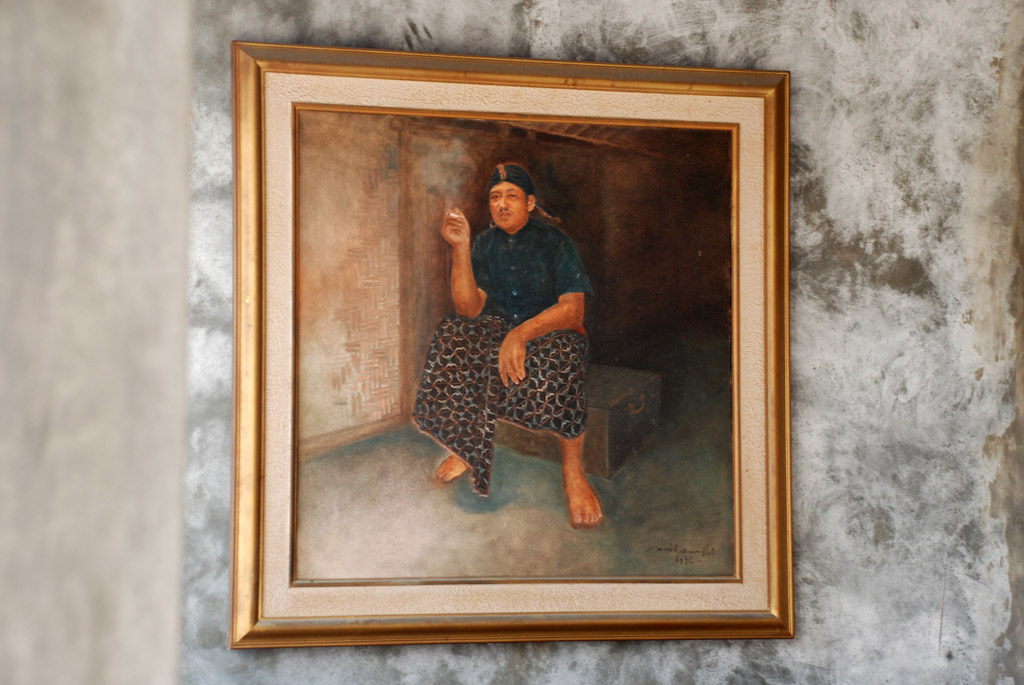
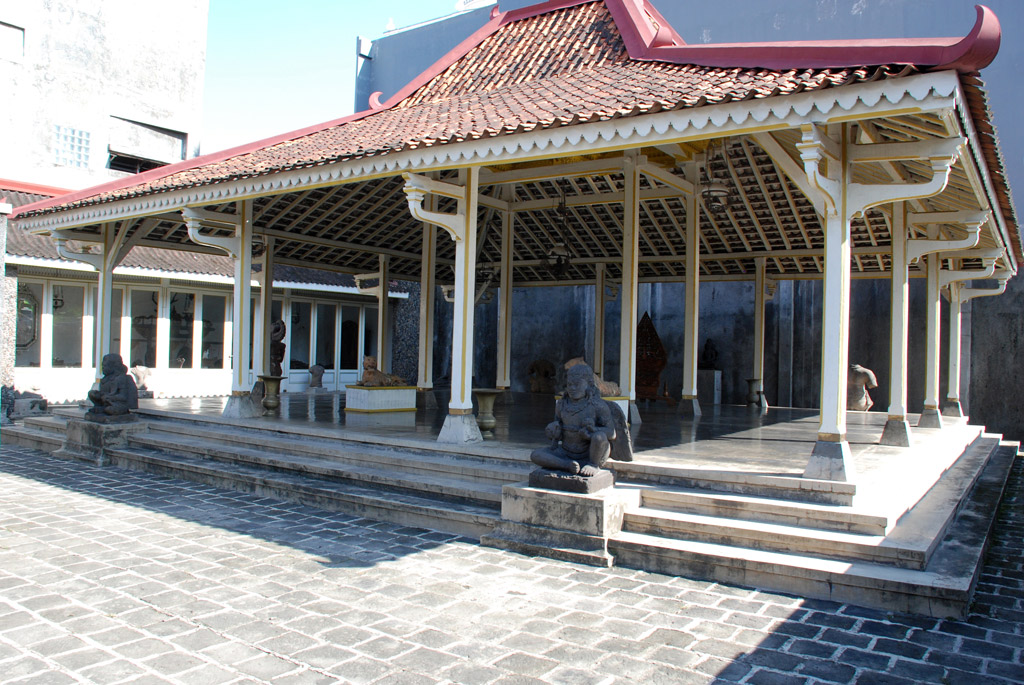
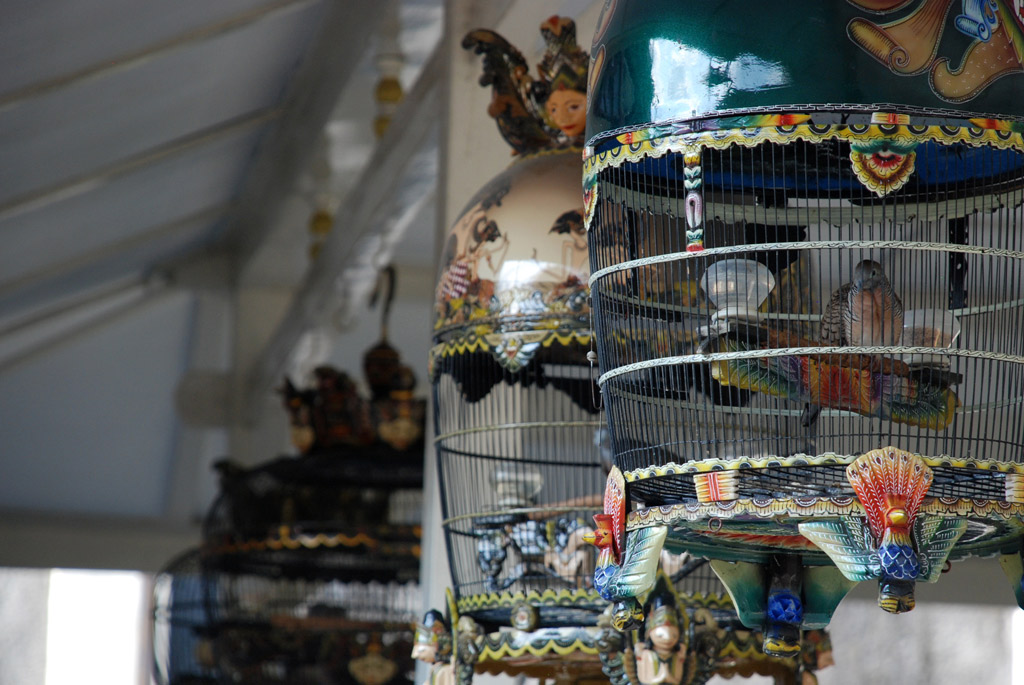
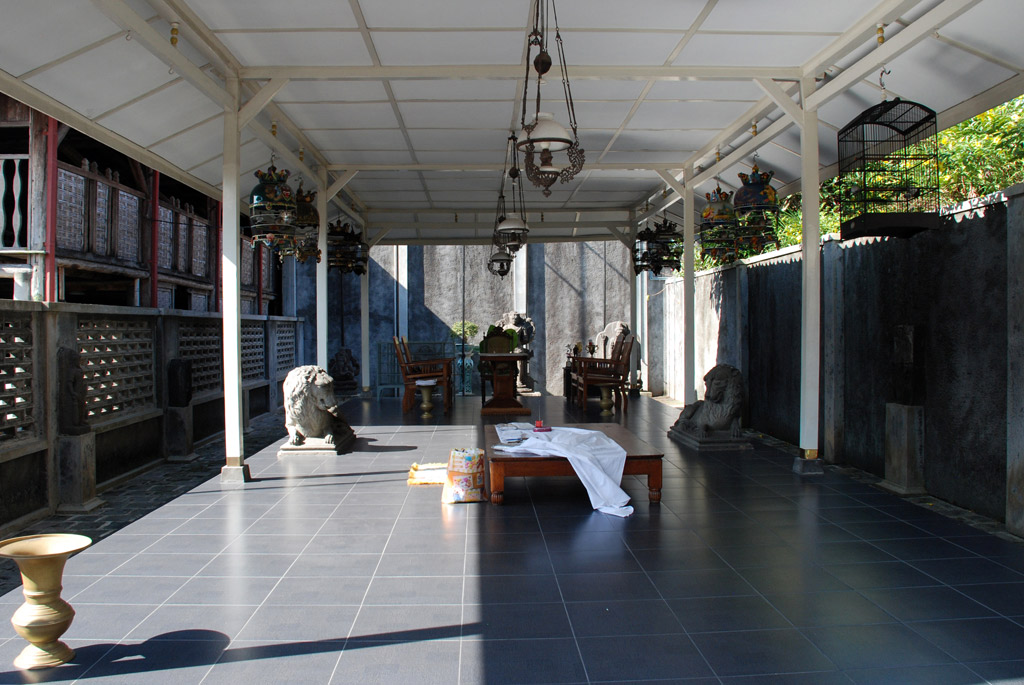
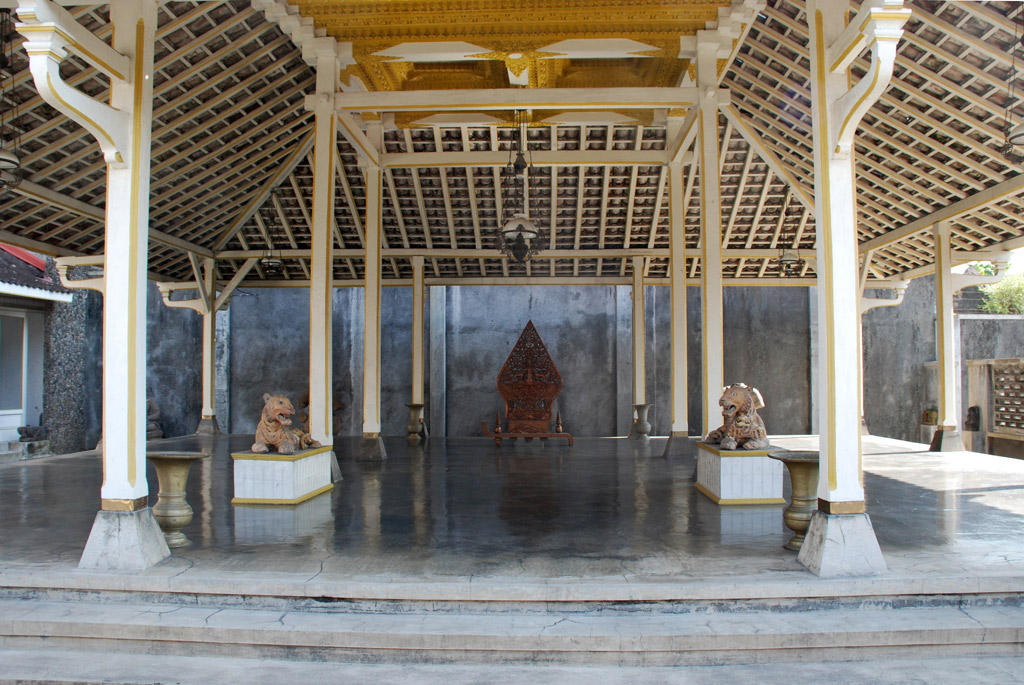
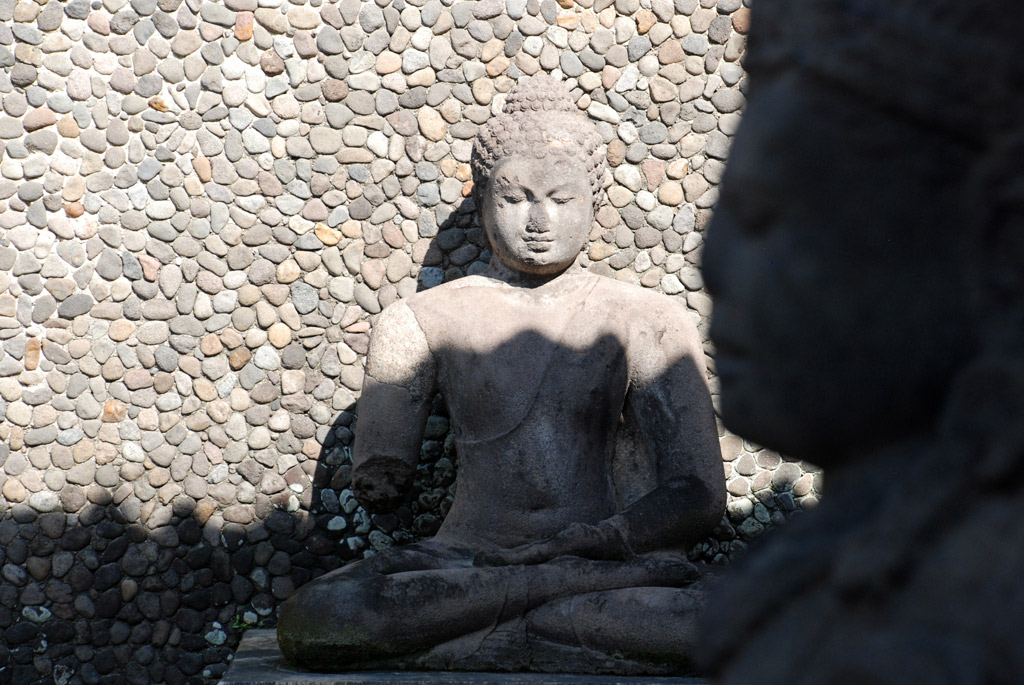
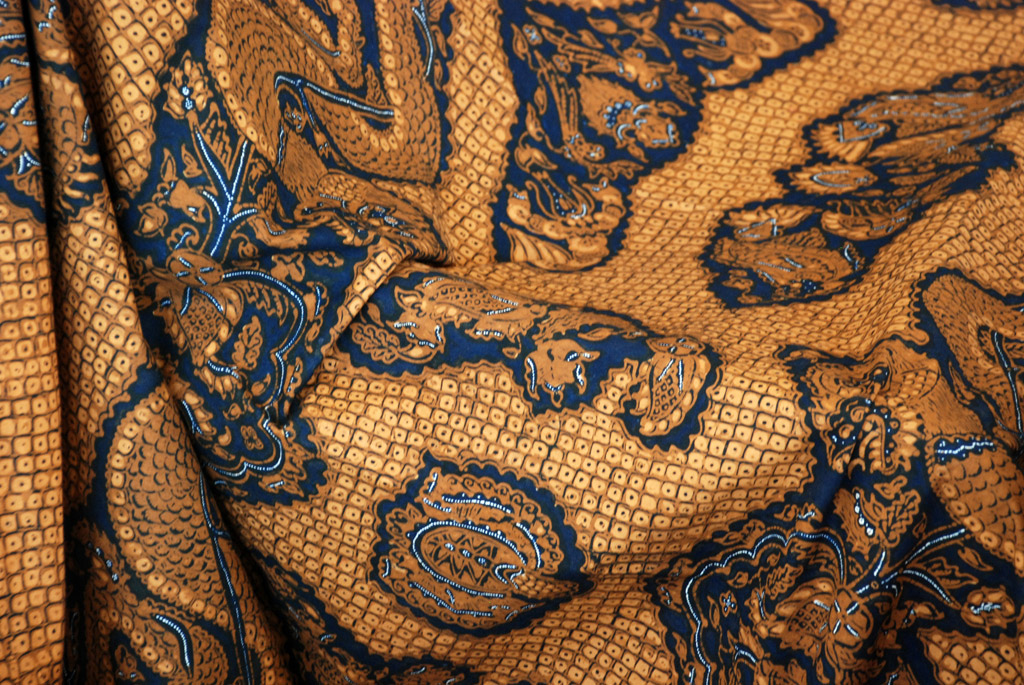
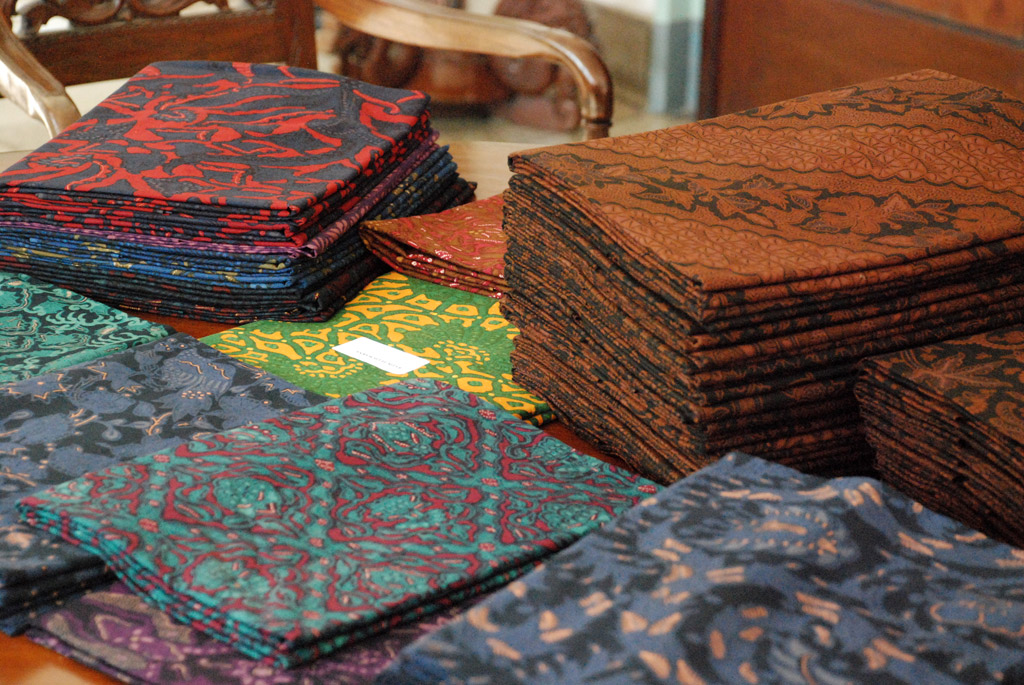
There are two major perspectives on batik as a part of Indonesian culture. The first perspective is nationalism. Even though the tradition of batik wax-resist-dyeing process is an ancient art form that happens all over the world, batik has a special connection with Indonesian culture. The term, “batik” itself came from the combination of two Javanese words, amba (‘to write’) and titik (‘dot’). Whenever there is a national/international event, batik will be the obligatory dress code, as well as the first option for an Indonesian souvenir. And with the acclamation from UNESCO for Indonesian batik as the Masterpiece of Oral and Intangible Heritage of Humanity on 2009, batik has become one of the main representations of the nation’s culture – the most visible identity of Indonesian nationalism.
The second perspective of batik is one of exoticism. Although it is a good for Indonesian culture to have a tangible representation, there are cynical views regarding batik as the symbol of the country’s culture. The reason is that batik has become a cliché symbol of Indonesian culture – that the outside world will only seek for batik as the simplest explanation of Indonesian culture, that the diverse array of cultures are not fully represented with batik as the symbol.
Before deciding which perspectives we agree on, we need to understand more about batik itself. We had the chance to visit one of the finest representations of Indonesian Batik. Located in Solo, Central Java, is a place called “Go Tik Swan”. Named after its founder, Go Tik Swan is a reputable name in the batik industry. Also known by his Indonesian name, Hardjonagoro, Go Tik Swan is dubbed as the guru for batik experts all over the world on the “Indonesian Spirit” book, published by the Indonesian Batik Foundation.
The story behind the artful predicate dates back to the Soekarno era. Fascinated by Go Tik Swan’s passion for Indonesian culture, Indonesia’s first president asked him to work on a new concept for batik. Batik was then a craft that represented certain regions; with each area having their own distinct style of batik; Soekarno thought that Go Tik Swan should make batik that would represent Indonesia as a whole. To answer the challenge from the president, Go Tik Swan did some in-depth research to find the right formula for this national batik. He consulted some of the most prominent batik centers around Java. Combined with insights from the cultural experts-including Ms. Soed, one of the most famous names in Indonesian songwriting, he came out with the new form of batik that boasts bright colors and unique patterns. He combined the key characters from Indonesia’s fabric culture. The introvert characteristic of Yogyakarta and Surakarta’s batik combined with the extrovert character of batik from the north shore of central Java, he used the tinting method from the coastal area, and also applied weaving techniques from Bali – resulting in a new formula that answered the challenge from Soekarno, a batik that could represent the cultures of Indonesia, the Indonesian batik.
This new formula from Go Tik Swan brought a breath of fresh air to the batik industry. The year 1960-1970 was a glory-era for batik. Batik became the favorite fabric of the high-class society in and outside the country.
Mr. Go Tik Swan passed away at the age of 77 in 5th November 2008. He died with some of the most prestigious awards in the nation, including one of the most respected title from the Surakarta Empire, “Panembahan”. But even with his passing, the name “Go Tik Swan” remain as an honored brand in the world of batik. His legacy continues with the quality of the brand’s products. We can still see the bright perspective of Mr. Go Tik Swan from the simplest detail of the fabric. Sawung Galing, Kembang Bangah, Kuntul Nglayang, Naga Raja, Kawung Retno Dumilah, Truntum, Kembang Kenikir, Sida Mulyo, and Candi Luhur are some of the patterns that are part of his legacy. The famous pattern of Sawung Galing comes from the cockfighting tradition of East Java, showing the careful attention of Go Tik Swan to Indonesian culture. One of the most interesting story comes from one of his favourite pattern – the Kembang Bangah. In this pattern Go Tik Swan portrays the feeling of alienation in society by developing batik motifs of flowers that grow around the sewers – ones that aren’t in the spotlight.
His batik factory continues to produce until now. They have numbers of artists that still draw all of his patterns with a canting – a pen-like instrument that is used to apply liquid hot wax in the batik-making process, especially used on the batik tulis (manually drawn batik). Delivering some of the finest batik in the world from Solo, Central Java.
With all of its history, not only is Go Tik Swan an example of how traditional culture could have a deep perspective of culture and quality, but it is also a concrete example that it is not entirely true to think that batik only as a symbol of exoticism of Indonesian culture. That batik also has several dimensions that serves the diversity of Indonesian culture.
